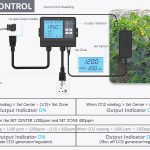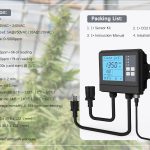
Troubleshooting Guide: Dealing with Common Issues in Caring for Indoor Begonia Plants
Troubleshooting Guide: Dealing with Common Issues in Caring for Indoor Begonia Plants
Indoor begonias are popular houseplants known for their vibrant foliage and ease of care. However, like all plants, they can encounter various issues that may affect their growth and health. Here is a troubleshooting guide to help you deal with common problems in caring for indoor begonia plants:
- Yellow leaves: If your begonia’s leaves are turning yellow, it could be due to overwatering or underwatering. Ensure that the soil is well-draining and water your plant when the top inch of soil feels dry to the touch. Also, make sure that the pot has proper drainage holes to prevent waterlogging.
- Brown spots on leaves: Brown spots on begonia leaves could be caused by fungal diseases such as powdery mildew or botrytis. To treat this issue, remove any affected leaves and provide good air circulation around the plant. You can also use a fungicide spray to prevent further spread of the disease.
- Root rot: Overwatering is the most common cause of root rot in begonias. If you notice that your plant’s leaves are wilting and the stem feels soft and mushy, it could be a sign of root rot. To save the plant, remove it from the pot and trim off any affected roots. Repot the plant in fresh, well-draining soil and reduce watering frequency until the plant recovers.
- Pest infestations: Begonias can attract pests such as spider mites, mealybugs, and whiteflies. These pests can cause damage to the plant by sucking out its juices or transmitting diseases. To control pest infestations, isolate the affected plant and use an insecticidal soap or neem oil spray to kill the pests.
- Slow growth: If your begonia is not growing well, it could be due to inadequate light, poor soil quality, or nutrient deficiencies. Move your plant to a brighter location with indirect sunlight and repot it in fresh soil with added organic matter. You can also fertilize your plant with a balanced liquid fertilizer every 4-6 weeks during the growing season (spring and summer).
By following these troubleshooting tips, you can identify and address common issues in caring for indoor begonia plants and ensure that they thrive in your home. Remember to always pay attention to your plants’ individual needs and adjust your care accordingly.














